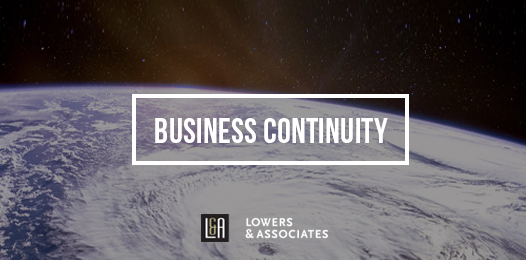
4 Keys to Business Continuity Planning for Natural Catastrophes

A catastrophe, by definition, is an event that causes great and often sudden damage or suffering. Catastrophic events, such as those caused by natural disasters, are difficult, if not impossible, to fully predict yet recent events have shown us that preparing for the unpredictable is critical to business survival.
According to the Federal Emergency Management Agency, 40% of small businesses will not reopen after a natural disaster. One year later, 25% more affected small businesses will close. By year three, 75% without a business continuity plan will fail.
In 2018, droughts, hurricanes, flooding, and wildfires caused $225 billion in economic losses around the world, according to the Weather, Climate & Catastrophe Insight 2018 Annual Report.
Because these catastrophes are low-probability events, many businesses fail to plan for their aftermath in the form of a business continuity plan. Here are four keys to helping your business continue to operate in the wake of a natural disaster.
1. Analyze the Business Impact
If a wildfire were to run through the town of your business headquarters, how would your business be affected? If an earthquake were to destroy the warehouse where your inventory is held, what would be the impact? Ask the same of each type of natural disaster. These very fundamental first questions are critical to forming your business continuity plan. By analyzing the business impact in this specific and personal way, you can begin to see how you will need to prioritize critical business functions and determine which processes are most critical to recover, how quickly they must be recovered after a disaster, and how much you are willing to pay to protect them.
2. Assess the Risks
How likely is it that you will face a wildfire, hurricane, earthquake, tsunami, etc.? Create a list of potential disasters and prioritize them based on their severity and likelihood of occurrence. Remember that by their very nature, natural disasters have a statistically low probability of occurrence so we’re really talking about the likelihood based on a relative scale. Looking at potential disasters this way will help you determine which should attract the most attention during your business continuity planning.
Another aspect of assessing the risks is to look at the recovery plans you have in place now compared to what would be needed. How wide is the gap? The wider the gap, the greater the possible threat.
3. Prepare the Plan
With insight from the first two steps, you can formulate your business continuity plan (BCP). The plan should document strategies and procedures to maintain, recover, and resume critical business functions and processes and it should include procedures to execute the plan priorities for critical and non-critical functions, services, and processes.
Unlike a more general business disruption event, such as a small localized fire or a burglary, catastrophic natural events tend to impact a wider area and have a much longer recovery time frame. The focus often starts with limiting the loss of life and crisis management. As such, your continuity plan needs to have elements you might not normally think of including. Here are some of those elements:
- Ensure fire protection systems, generators, redundant systems, and gas tanks are in proper working order, filled, and fully secure.
- Work with local police and fire departments to have procedures in place for receiving and responding to warnings from outside agencies and emergency responders.
- Designate a crisis response person(s) and have internal and external communications prepared in advance.
- Review your emergency preparedness and evacuation plans for everyone in the building. Identify and designate safe areas in the building, such as an interior reinforced room or bathroom, for different scenarios.
- Ensure the emergency supply kits are fully stocked with water, medical supplies, batteries, flashlights, etc.
For additional ideas, the Federal Emergency Management Agency (FEMA) has prepared comprehensive emergency preparedness materials to help with disaster preparedness.
4. Test the Plan
Your business continuity plan will be a living, breathing document that will need to be updated, practiced, and tested regularly. Here are some considerations:
- Develop training, testing, and maintenance schedules
- Conduct training with the business continuity planning team
- Conduct orientations for all team members, customers and/or clients, as applicable
- Perform a business-wide simulation exercise to test elements of the plan. Have a small group develop the simulation but keep the details under wraps so that the team doesn’t know what to expect.
- Perform a post-simulation review to uncover weakness or gaps in the plan
- Update the continuity plan to include lessons learned
- Continue to test the plan two to four times a year, keeping an eye to business processes, infrastructure, or personnel that may have changed in the interim
The main factor that puts businesses at risk, post-catastrophe, is their failure to prepare. If you’d like help getting started with a business continuity plan, we welcome you to request a conversation with a risk management expert.
ABOUT THE AUTHOR